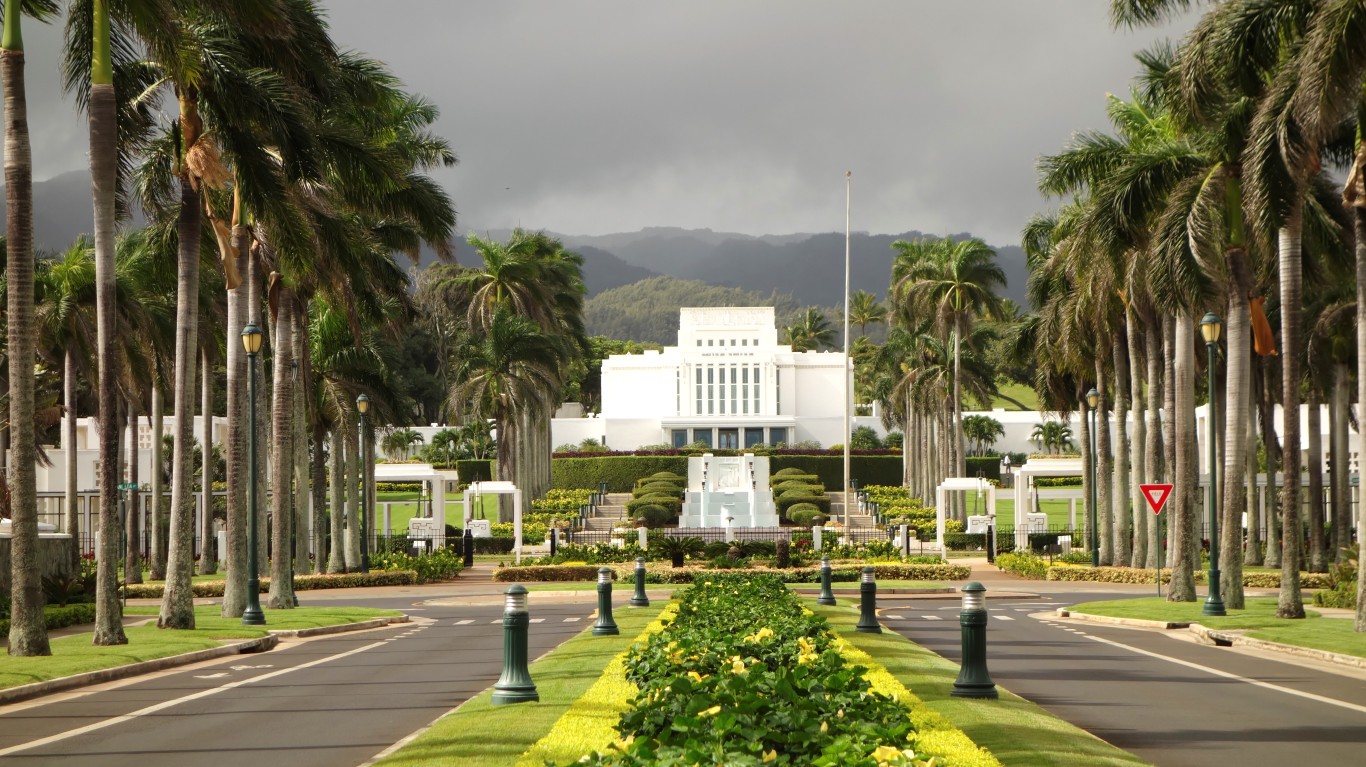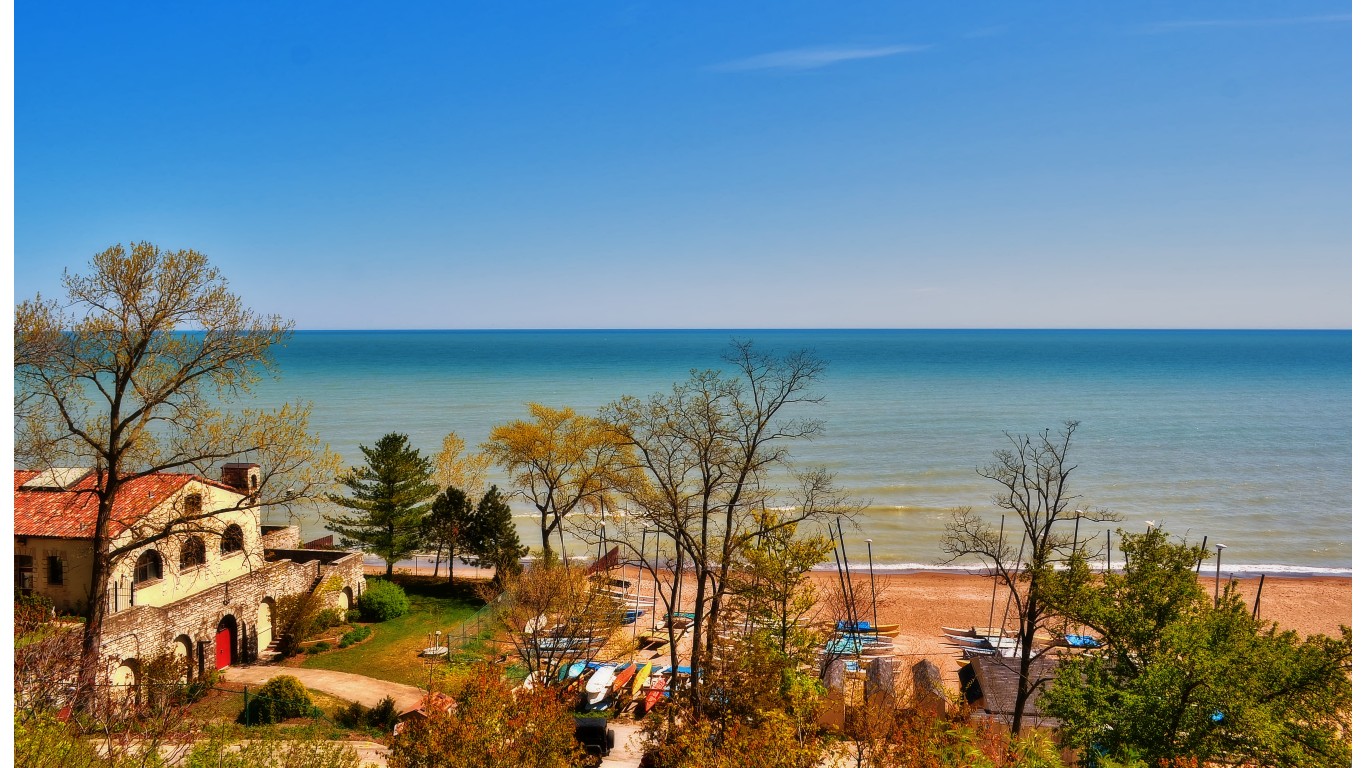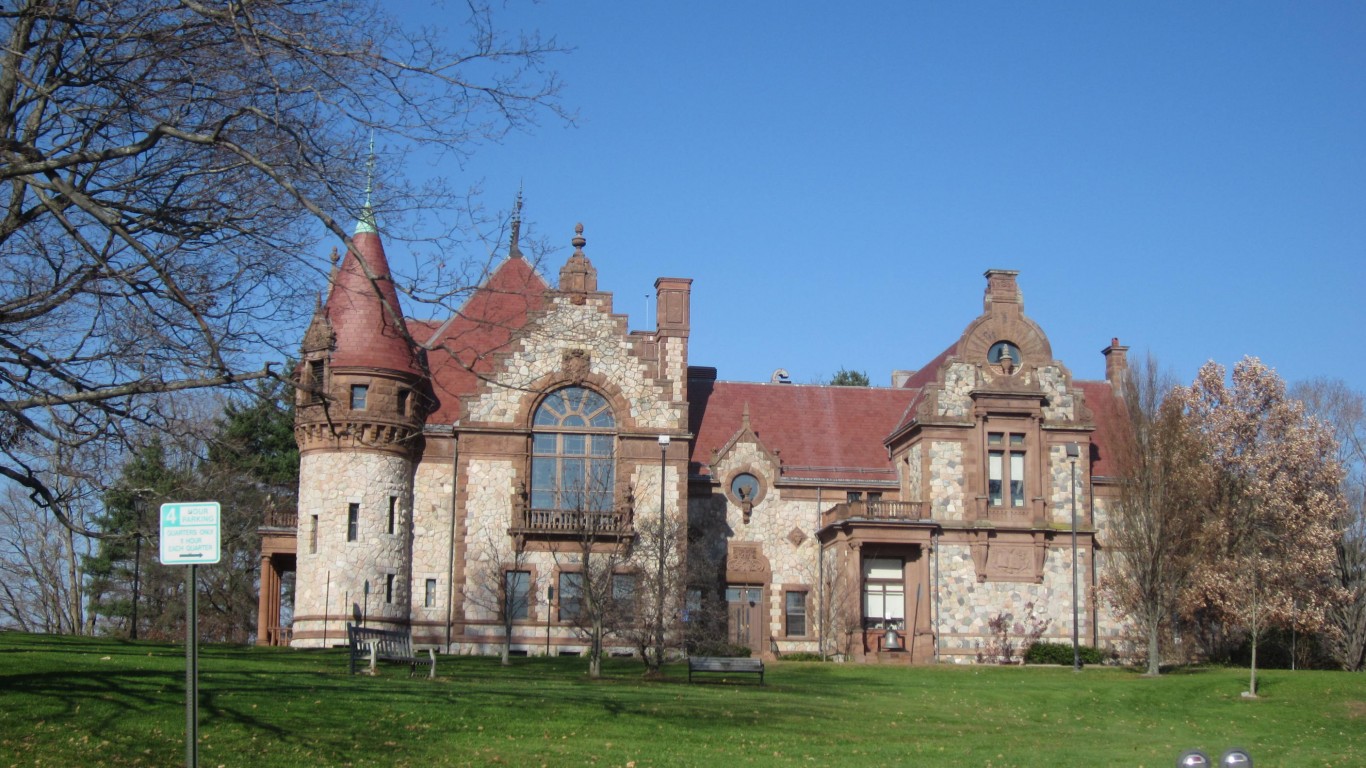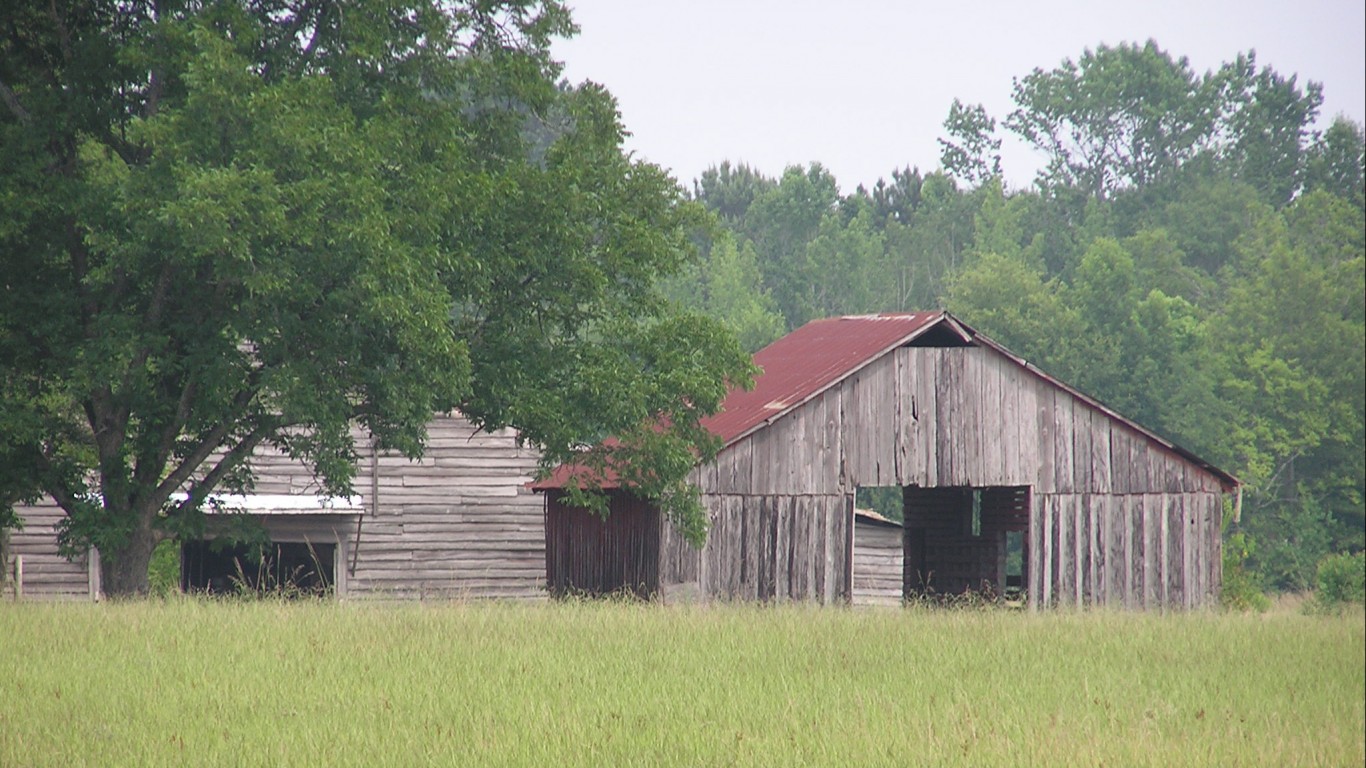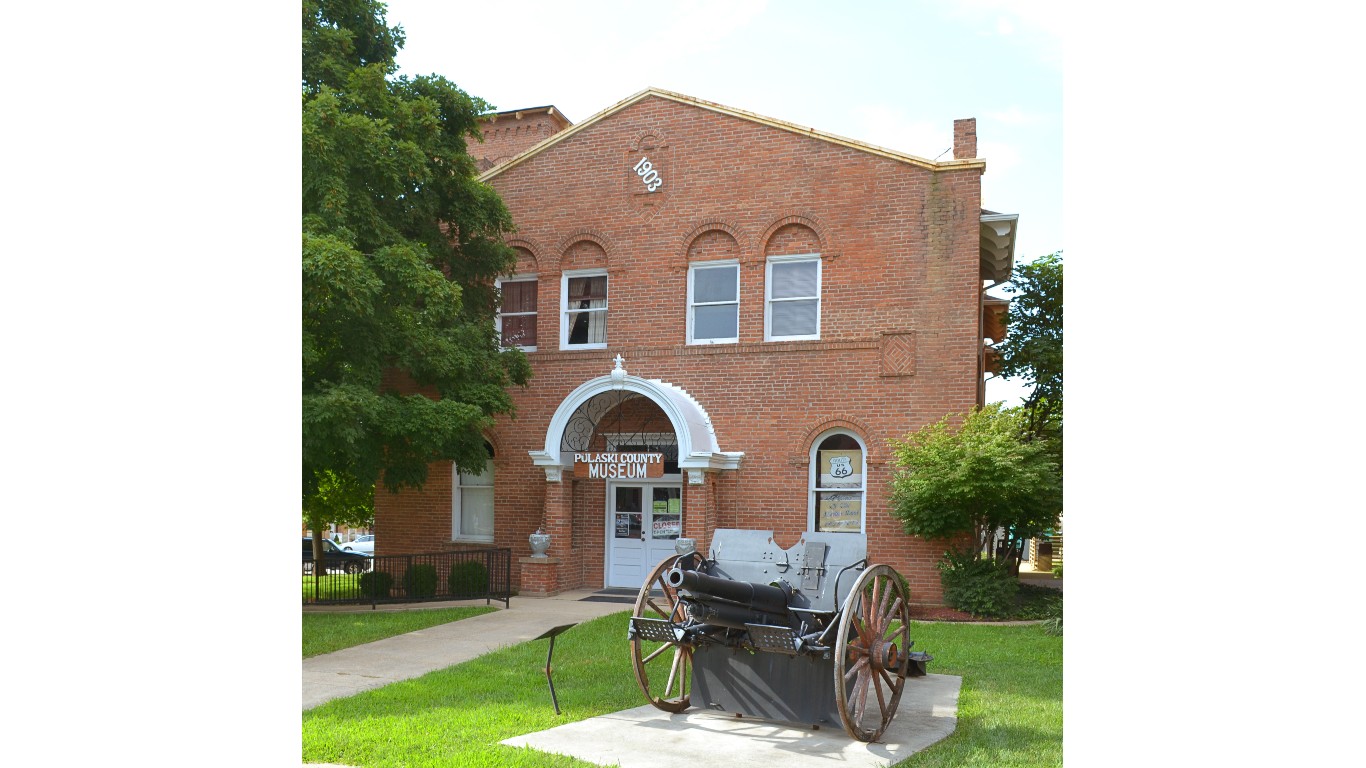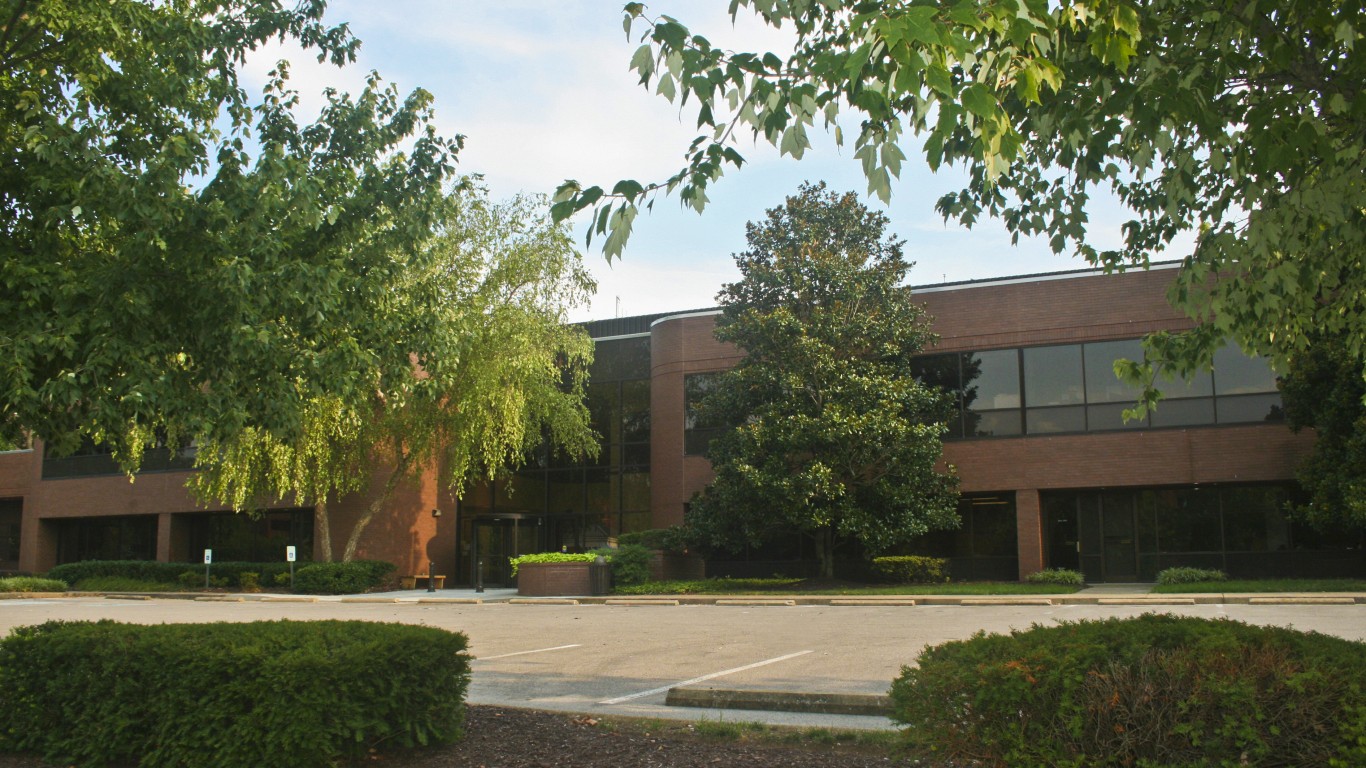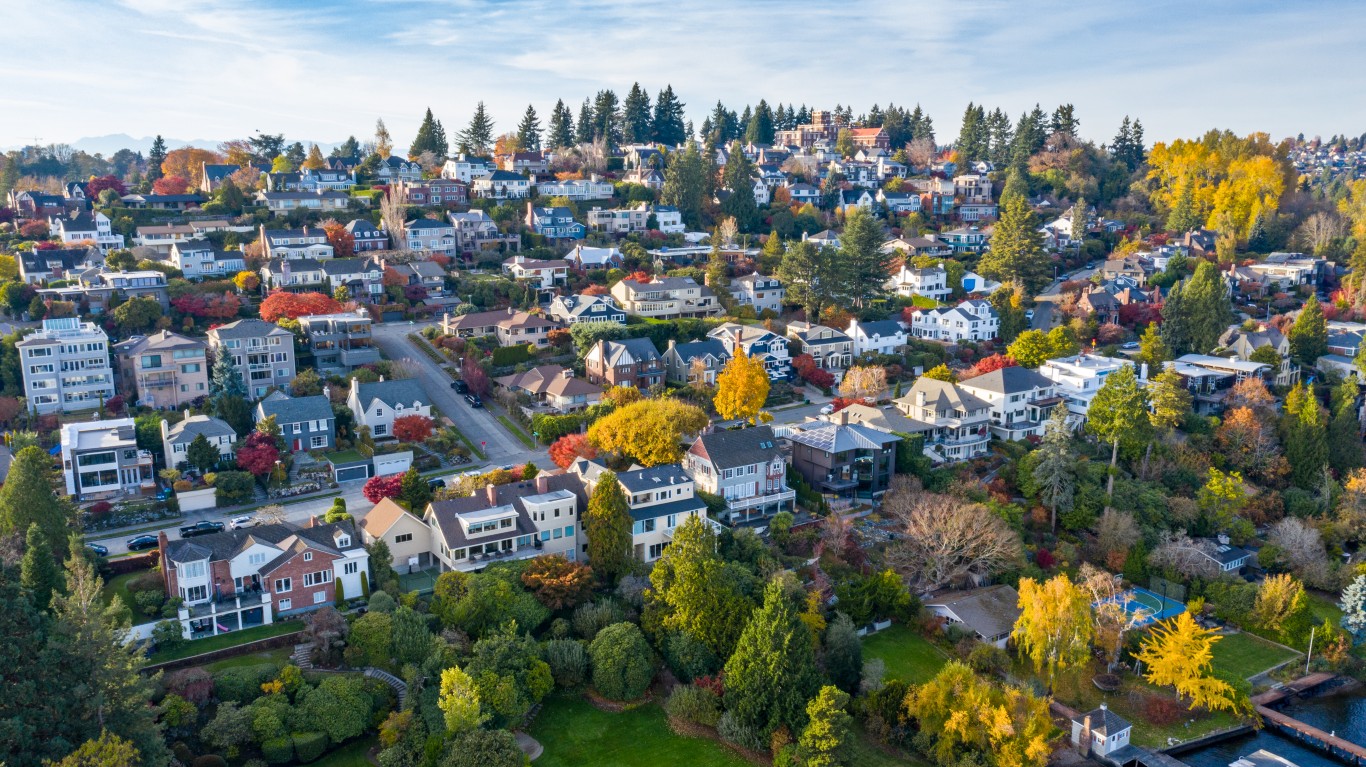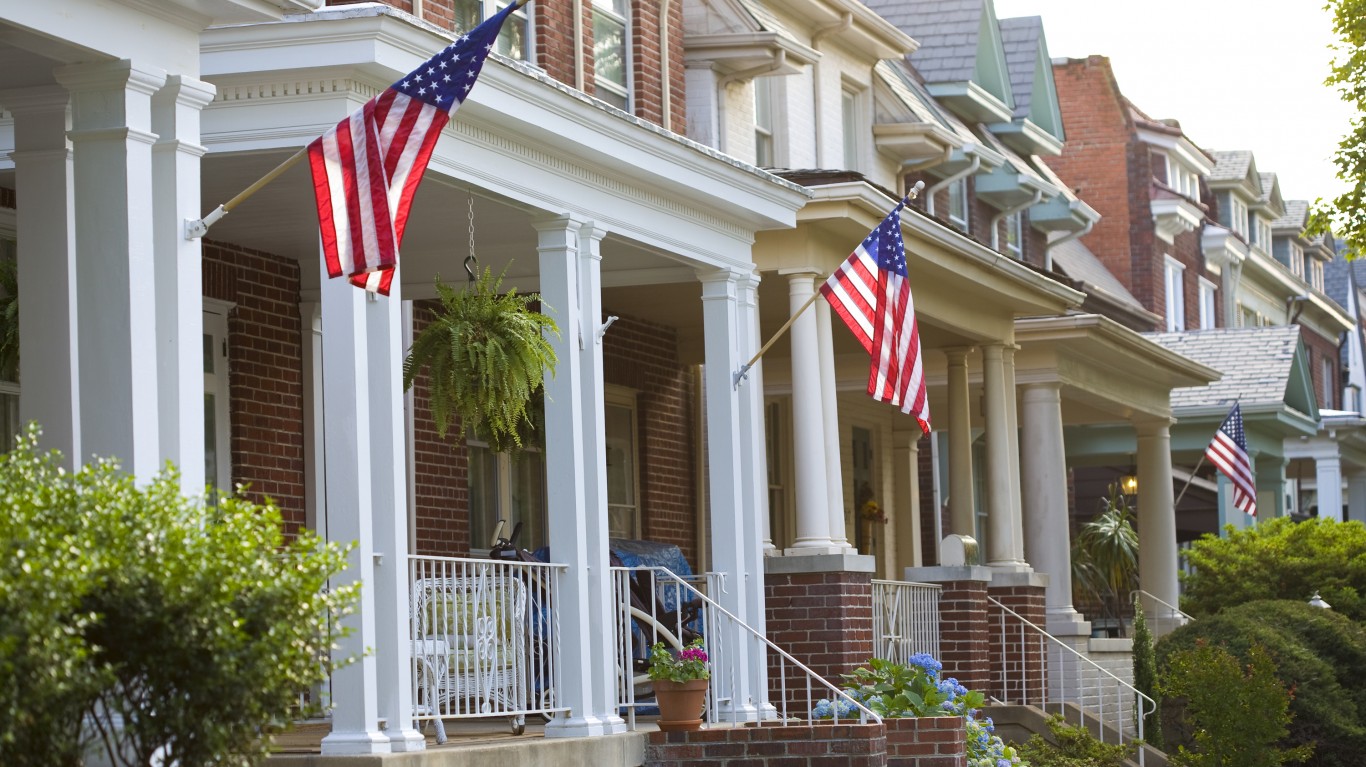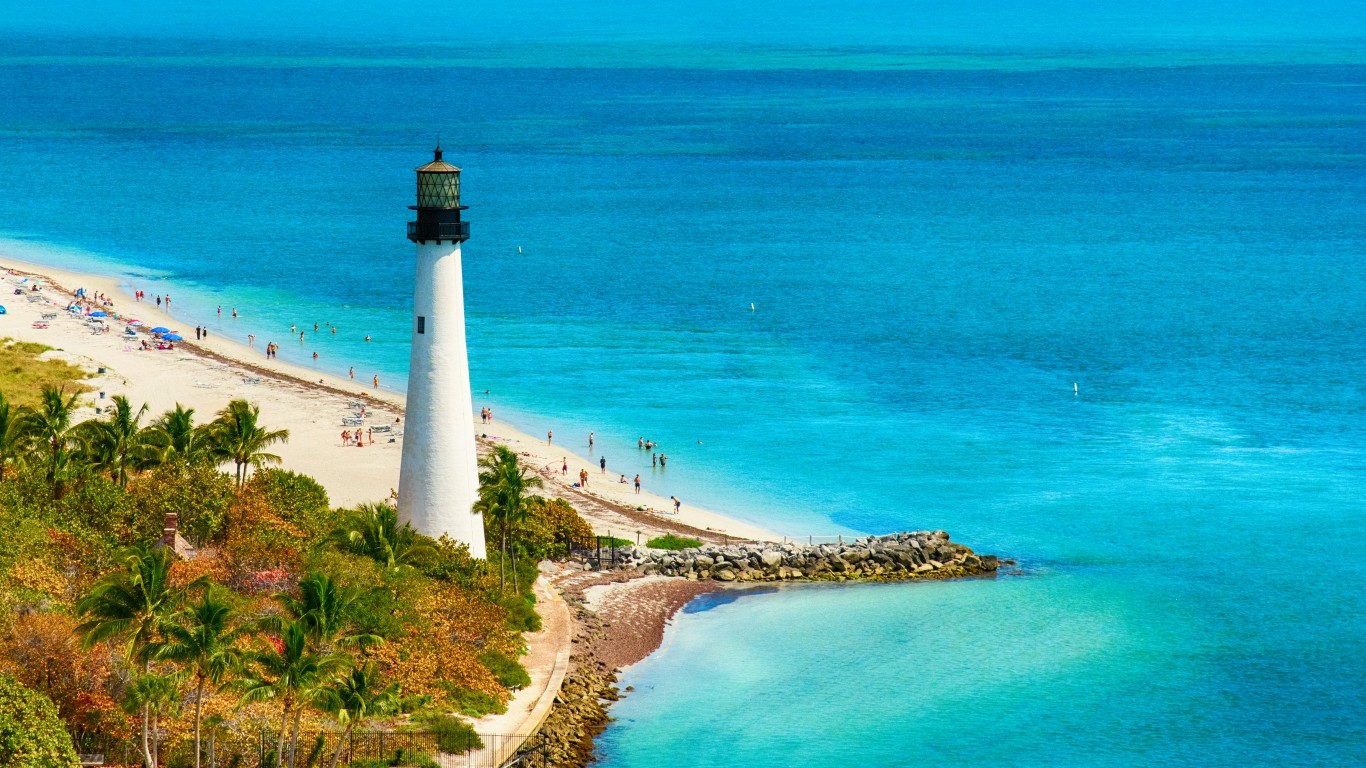
Where to live can be confusing for many of us. Between rising costs and lack of employment, choosing which city is best is not always easy. Although the number of Americans who relocate each year has been trending downward for decades, according to the U.S. Census Bureau, only 28.2 million people moved to a new home in 2022, down from 41.1 million 20 years earlier, the numbers dropped even more in 2023, down by 9%, with 25.9 million people opting to relocate.
Many Americans are still looking for what is the top city to live in, whether it remains in their home state or requires a further move, and several factors contribute to their decisions. Climate, health considerations, taking or finding a new job, buying a better or more affordable home, and living in a safer neighborhood are all commonly cited reasons. But for those who are not prepared to move across the country, within every state, some cities and towns stand out for the higher overall quality of life they can offer. (This is how big a house you can buy for $200,000 in every state.)
24/7 Wall St. created a weighted index of 22 measures to identify the top city to live in each state by using data from the Census Bureau, the FBI, and the Centers for Disease Control and Prevention. The measures used in the index fall into one of three broad categories: economy, community, and overall quality of life. We considered all places in the U.S. with sufficient data and populations of at least 5,000. Our list includes cities, towns, villages, boroughs, and unincorporated communities.
The locations on this list typically tend to have low crime rates, thriving economies, and relatively financially secure populations. A majority of residents in most of these communities also typically have easy access to quality health care, public parks, and recreation facilities, as well as to entertainment and cultural attractions such as bars, restaurants, theaters, and museums.
Some of the places on this list are large cities with hundreds of thousands of residents; however, most are relatively small, with populations of less than 30,000. Still, many of these smaller communities are within commuting distance of major cities like Chicago, Miami, New York, and Washington D.C. (Here is a look at America’s richest cities.)
Here is the top city to live in each state.
See below for our detailed methodology.
Alabama: Mountain Brook

- Median home value: $697,800 (state: $157,100)
- Median household income: $150,268 (state: $54,943)
- Population with access to exercise opportunities: 80.0% (state: 60.9%)
- Recreational establishments: 24.3 per 10,000 businesses (state: 33.3 per 10,000)
- Total population: 22,184
Alaska: Juneau

- Median home value: $358,200 (state: $282,800)
- Median household income: $90,126 (state: $80,287)
- Population with access to exercise opportunities: 100.0% (state: 75.7%)
- Recreational establishments: 27.1 per 10,000 businesses (state: 50.8 per 10,000)
- Total population: 32,240
Arizona: Paradise Valley

- Median home value: $1,778,000 (state: $265,600)
- Median household income: $203,659 (state: $65,913)
- Population with access to exercise opportunities: 92.7% (state: 86.2%)
- Recreational establishments: 25.6 per 10,000 businesses (state: 32.5 per 10,000)
- Total population: 12,666
Arkansas: Fayetteville
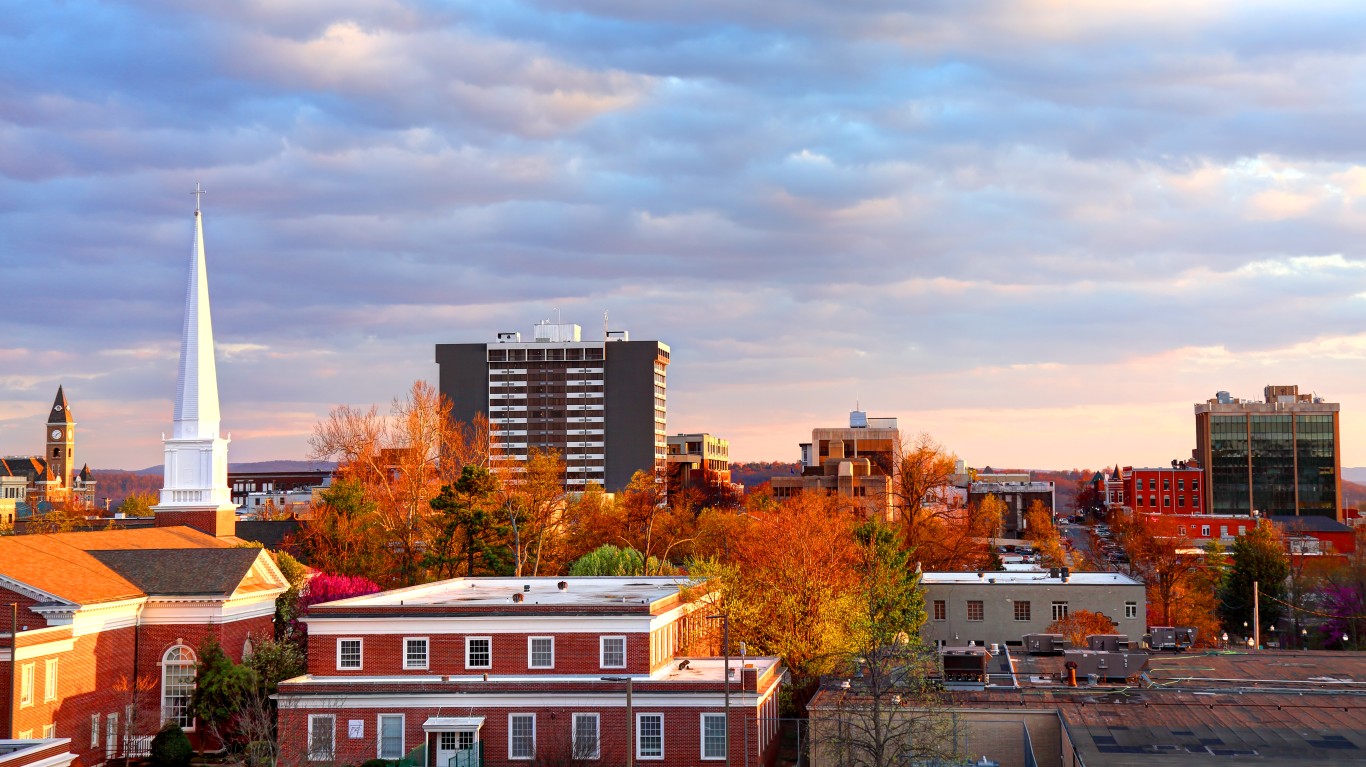
- Median home value: $255,600 (state: $142,100)
- Median household income: $52,111 (state: $52,123)
- Population with access to exercise opportunities: 82.4% (state: 63.0%)
- Recreational establishments: 16.9 per 10,000 businesses (state: 41.4 per 10,000)
- Total population: 92,070
California: Orinda

- Median home value: $1,538,400 (state: $573,200)
- Median household income: $248,984 (state: $84,097)
- Population with access to exercise opportunities: 98.2% (state: 94.6%)
- Recreational establishments: 27.0 per 10,000 businesses (state: 26.3 per 10,000)
- Total population: 19,497
Colorado: Aspen
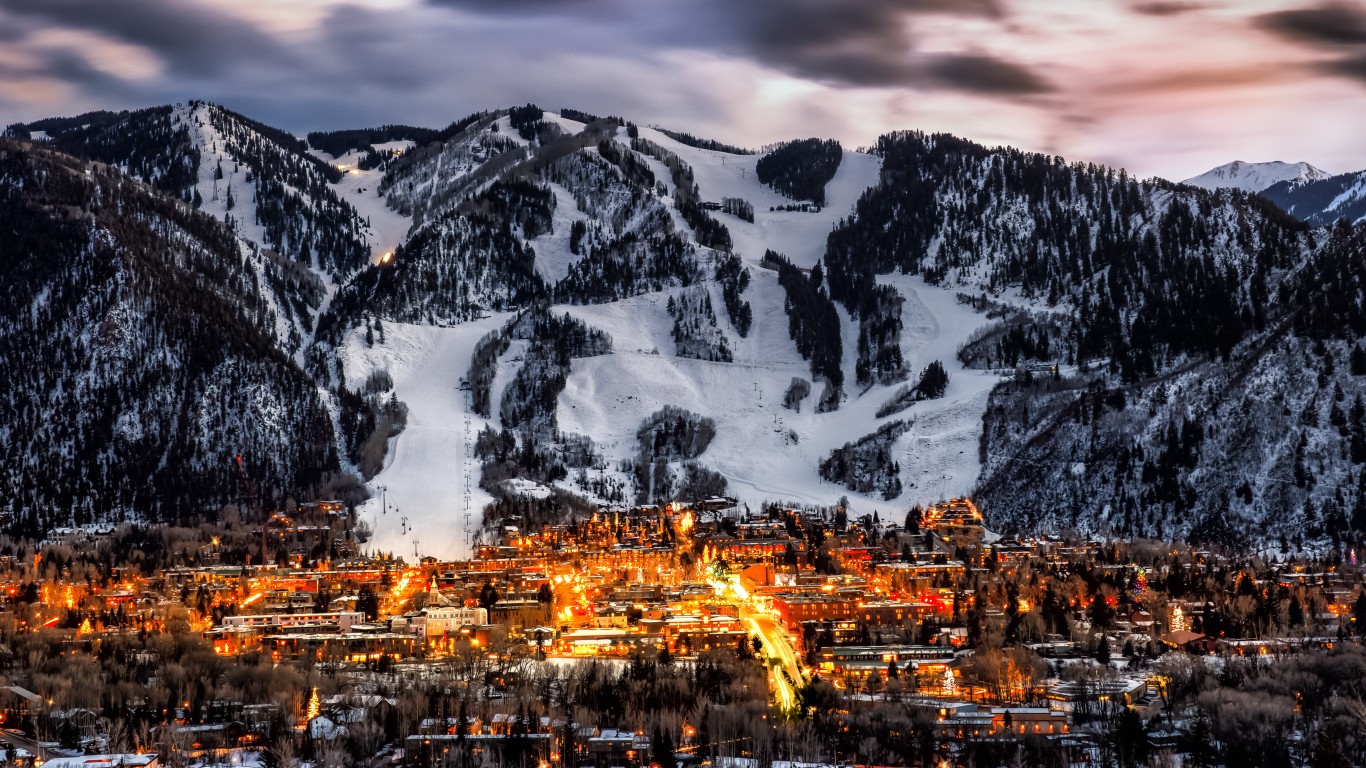
- Median home value: N/A
- Median household income: $89,625 (state: $80,184)
- Population with access to exercise opportunities: 94.6% (state: 90.4%)
- Recreational establishments: N/A
- Total population: 7,019
Connecticut: Old Greenwich
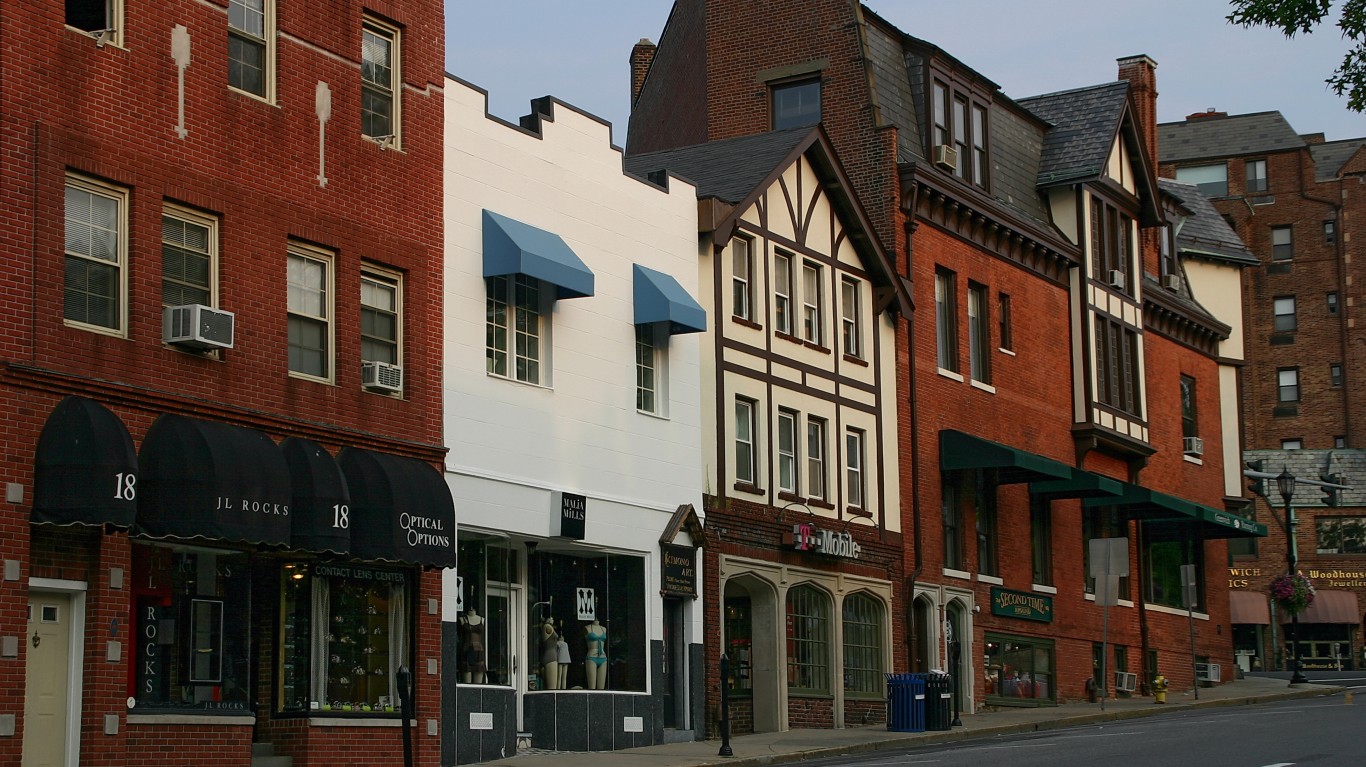
- Median home value: $1,444,800 (state: $286,700)
- Median household income: $234,152 (state: $83,572)
- Population with access to exercise opportunities: 97.5% (state: 93.5%)
- Recreational establishments: 57.2 per 10,000 businesses (state: 63.8 per 10,000)
- Total population: 6,929
Delaware: Hockessin

- Median home value: $460,800 (state: $269,700)
- Median household income: $158,036 (state: $72,724)
- Population with access to exercise opportunities: 93.5% (state: 81.3%)
- Recreational establishments: 33.2 per 10,000 businesses (state: 41.3 per 10,000)
- Total population: 13,464
Florida: Key Biscayne

- Median home value: $1,246,700 (state: $248,700)
- Median household income: $167,990 (state: $61,777)
- Population with access to exercise opportunities: 98.5% (state: 88.2%)
- Recreational establishments: 18.1 per 10,000 businesses (state: 32.1 per 10,000)
- Total population: 14,530
Georgia: Druid Hills
- Median home value: $698,000 (state: $206,700)
- Median household income: $137,576 (state: $65,030)
- Population with access to exercise opportunities: 88.5% (state: 74.6%)
- Recreational establishments: 12.4 per 10,000 businesses (state: 26.4 per 10,000)
- Total population: 8,611
Hawaii: Laie
- Median home value: $937,000 (state: $662,100)
- Median household income: $101,011 (state: $88,005)
- Population with access to exercise opportunities: 97.3% (state: 93.7%)
- Recreational establishments: 33.4 per 10,000 businesses (state: 43.1 per 10,000)
- Total population: 6,436
Idaho: Boise
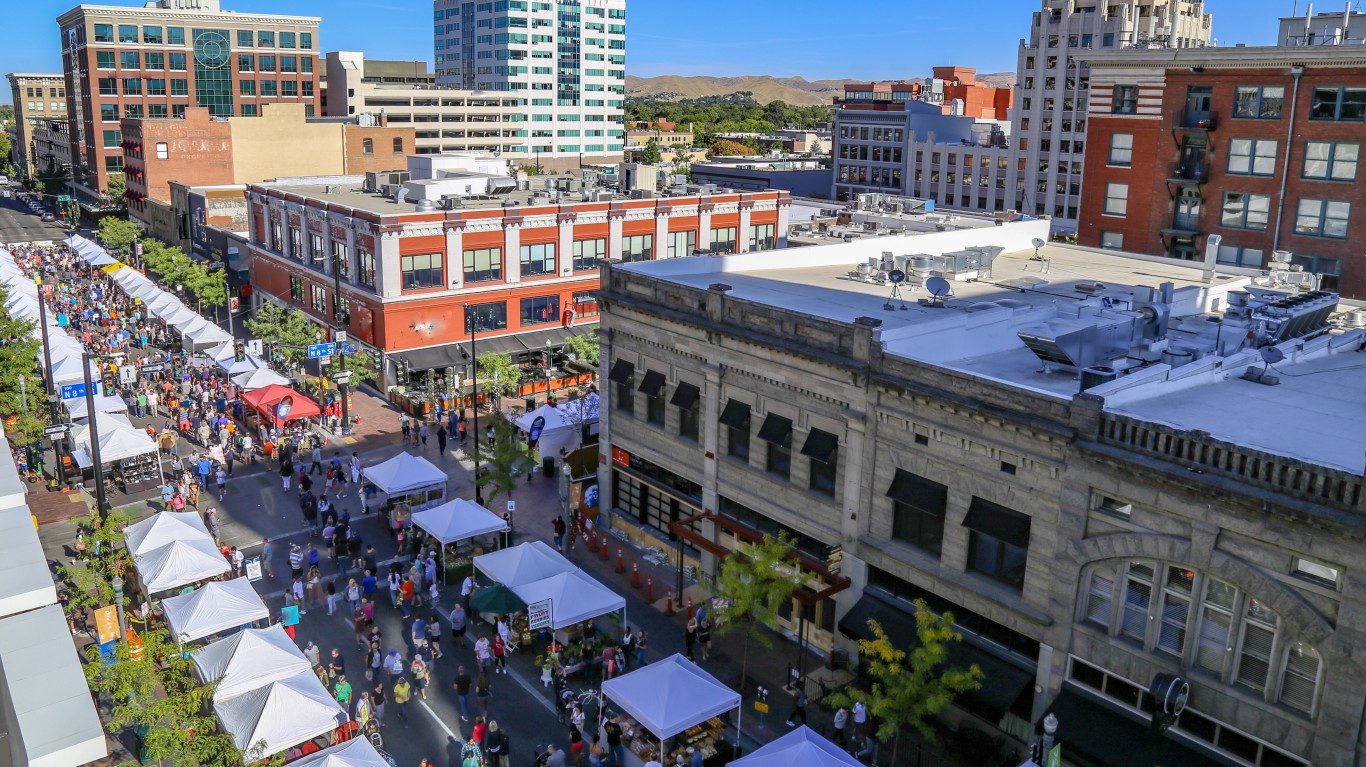
- Median home value: $322,300 (state: $266,500)
- Median household income: $68,373 (state: $63,377)
- Population with access to exercise opportunities: 86.0% (state: 74.7%)
- Recreational establishments: 27.7 per 10,000 businesses (state: 38.8 per 10,000)
- Total population: 231,537
Illinois: Glencoe
- Median home value: $1,101,200 (state: $212,600)
- Median household income: $212,132 (state: $72,563)
- Population with access to exercise opportunities: 99.3% (state: 90.4%)
- Recreational establishments: 24.6 per 10,000 businesses (state: 32.9 per 10,000)
- Total population: 8,824
Indiana: Carmel

- Median home value: $372,100 (state: $158,500)
- Median household income: $119,772 (state: $61,944)
- Population with access to exercise opportunities: 89.8% (state: 76.8%)
- Recreational establishments: 25.4 per 10,000 businesses (state: 39.9 per 10,000)
- Total population: 98,137
Iowa: Iowa City
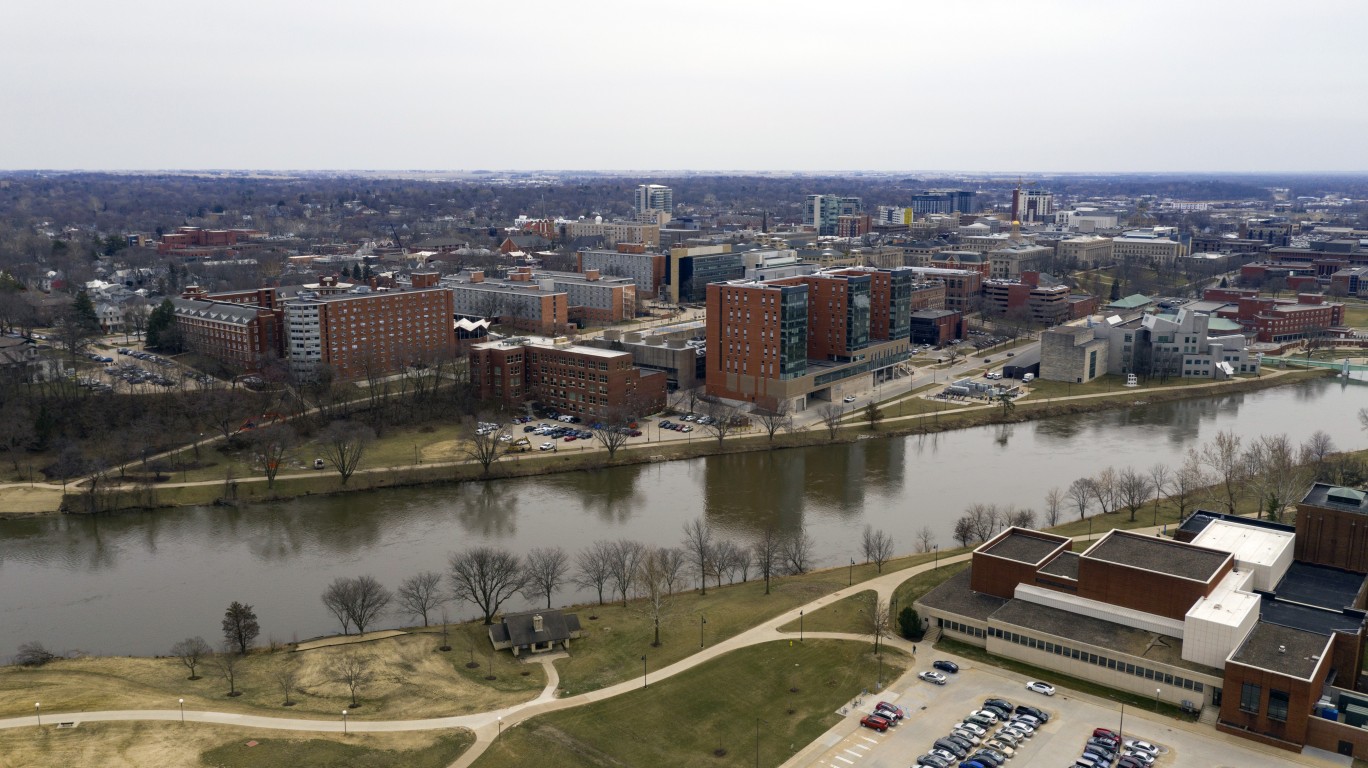
- Median home value: $230,700 (state: $160,700)
- Median household income: $51,925 (state: $65,429)
- Population with access to exercise opportunities: 89.6% (state: 79.3%)
- Recreational establishments: 23.4 per 10,000 businesses (state: 66.9 per 10,000)
- Total population: 74,240
Kansas: Leawood

- Median home value: $498,900 (state: $164,800)
- Median household income: $159,540 (state: $64,521)
- Population with access to exercise opportunities: 96.7% (state: 79.7%)
- Recreational establishments: 22.0 per 10,000 businesses (state: 56.5 per 10,000)
- Total population: 33,748
Kentucky: Lexington-Fayette
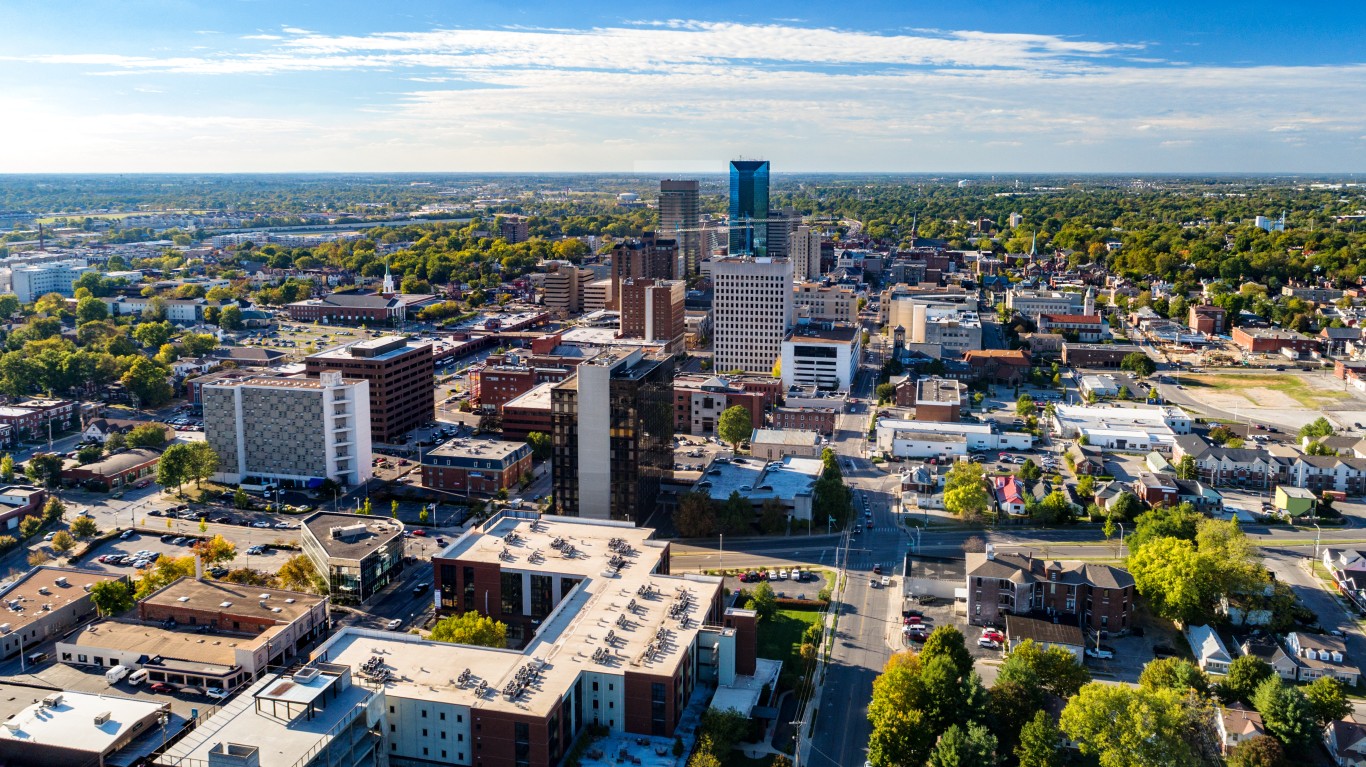
- Median home value: $216,800 (state: $155,100)
- Median household income: $61,526 (state: $55,454)
- Population with access to exercise opportunities: 99.2% (state: 69.9%)
- Recreational establishments: 20.1 per 10,000 businesses (state: 39.6 per 10,000)
- Total population: 321,354
Louisiana: Oak Hills Place

- Median home value: $363,600 (state: $174,000)
- Median household income: $90,347 (state: $53,571)
- Population with access to exercise opportunities: 96.9% (state: 75.8%)
- Recreational establishments: 15.9 per 10,000 businesses (state: 26.8 per 10,000)
- Total population: 9,201
Maine: Portland
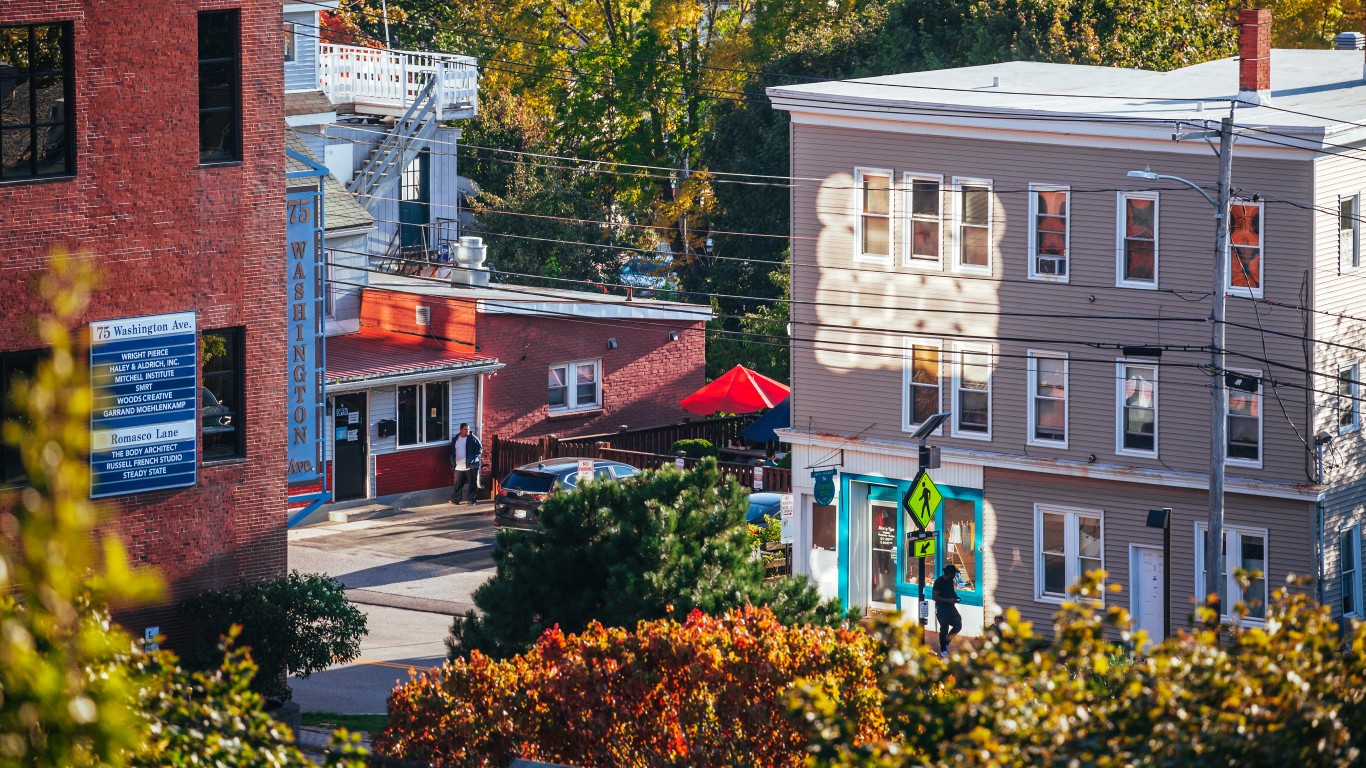
- Median home value: $341,700 (state: $212,100)
- Median household income: $66,109 (state: $63,182)
- Population with access to exercise opportunities: 85.1% (state: 65.7%)
- Recreational establishments: 73.2 per 10,000 businesses (state: 102.3 per 10,000)
- Total population: 68,063
Maryland: Chevy Chase

- Median home value: $999,200 (state: $338,500)
- Median household income: $207,971 (state: $91,431)
- Population with access to exercise opportunities: 99.8% (state: 92.1%)
- Recreational establishments: 21.8 per 10,000 businesses (state: 37.7 per 10,000)
- Total population: 9,889
Massachusetts: Wellesley
- Median home value: $1,251,800 (state: $424,700)
- Median household income: $226,250 (state: $89,026)
- Population with access to exercise opportunities: 94.7% (state: 94.7%)
- Recreational establishments: 31.6 per 10,000 businesses (state: 49.4 per 10,000)
- Total population: 29,365
Michigan: Ann Arbor
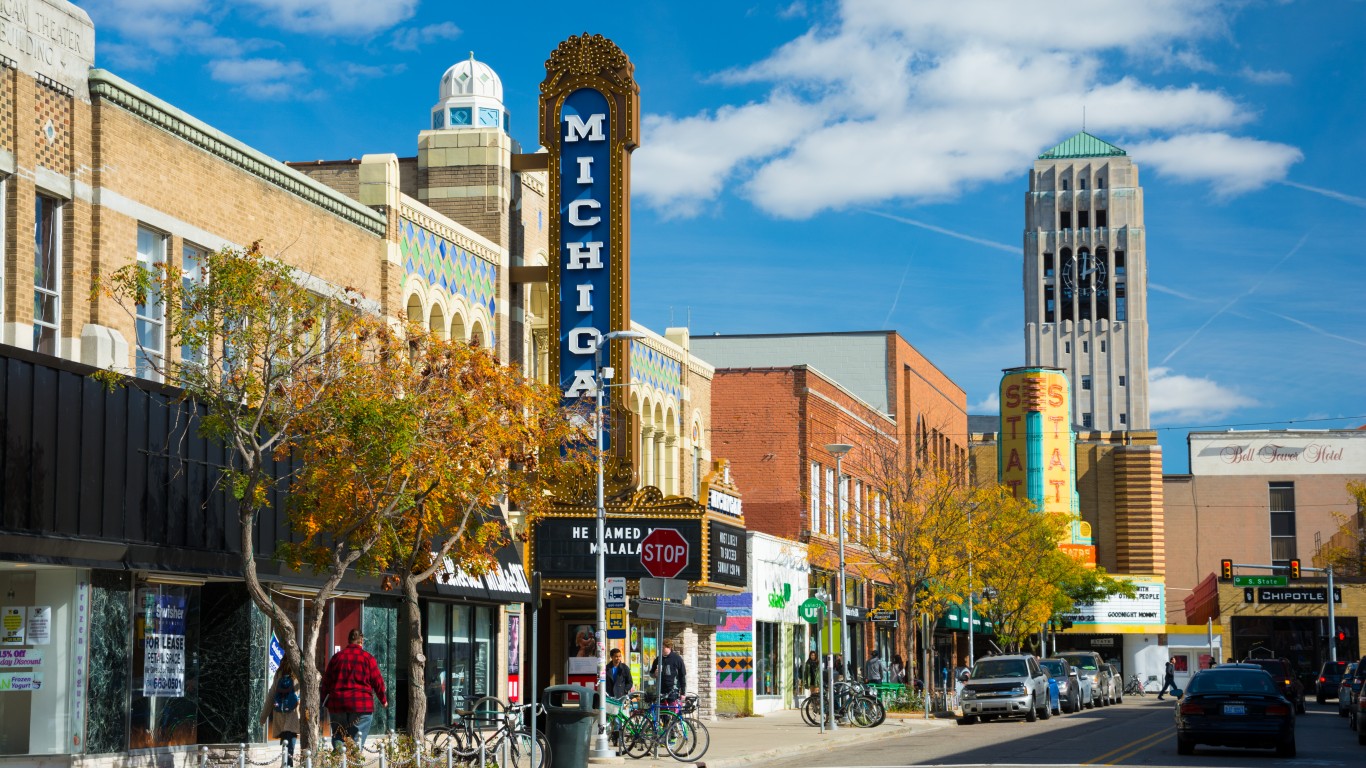
- Median home value: $366,600 (state: $172,100)
- Median household income: $73,276 (state: $63,202)
- Population with access to exercise opportunities: 87.8% (state: 85.2%)
- Recreational establishments: 41.7 per 10,000 businesses (state: 51.8 per 10,000)
- Total population: 122,731
Minnesota: North Oaks
- Median home value: $696,800 (state: $250,200)
- Median household income: $220,861 (state: $77,706)
- Population with access to exercise opportunities: 99.8% (state: 86.0%)
- Recreational establishments: 38.9 per 10,000 businesses (state: 52.7 per 10,000)
- Total population: 5,204
Mississippi: Madison
- Median home value: $282,600 (state: $133,000)
- Median household income: $119,662 (state: $49,111)
- Population with access to exercise opportunities: 81.2% (state: 57.5%)
- Recreational establishments: 24.0 per 10,000 businesses (state: 38.5 per 10,000)
- Total population: 27,459
Missouri: Fort Leonard Wood
- Median home value: N/A
- Median household income: $61,913 (state: $61,043)
- Population with access to exercise opportunities: 66.1% (state: 75.8%)
- Recreational establishments: N/A
- Total population: 15,629
Montana: Bozeman

- Median home value: $466,400 (state: $263,700)
- Median household income: $67,354 (state: $60,560)
- Population with access to exercise opportunities: 83.2% (state: 72.8%)
- Recreational establishments: 32.4 per 10,000 businesses (state: 54.3 per 10,000)
- Total population: 51,574
Nebraska: Chadron

- Median home value: $132,700 (state: $174,100)
- Median household income: $50,363 (state: $66,644)
- Population with access to exercise opportunities: 89.6% (state: 83.1%)
- Recreational establishments: N/A
- Total population: 5,376
Nevada: Incline Village
- Median home value: $1,042,700 (state: $315,900)
- Median household income: $131,914 (state: $65,686)
- Population with access to exercise opportunities: 88.3% (state: 91.5%)
- Recreational establishments: 14.8 per 10,000 businesses (state: 26.8 per 10,000)
- Total population: 9,440
New Hampshire: Lebanon

- Median home value: $274,400 (state: $288,700)
- Median household income: $80,619 (state: $83,449)
- Population with access to exercise opportunities: 84.9% (state: 84.2%)
- Recreational establishments: 113.5 per 10,000 businesses (state: 60.8 per 10,000)
- Total population: 14,316
New Jersey: Rumson
- Median home value: $1,309,200 (state: $355,700)
- Median household income: $239,188 (state: $89,703)
- Population with access to exercise opportunities: 96.0% (state: 96.1%)
- Recreational establishments: 42.9 per 10,000 businesses (state: 30.0 per 10,000)
- Total population: 7,292
New Mexico: Los Alamos
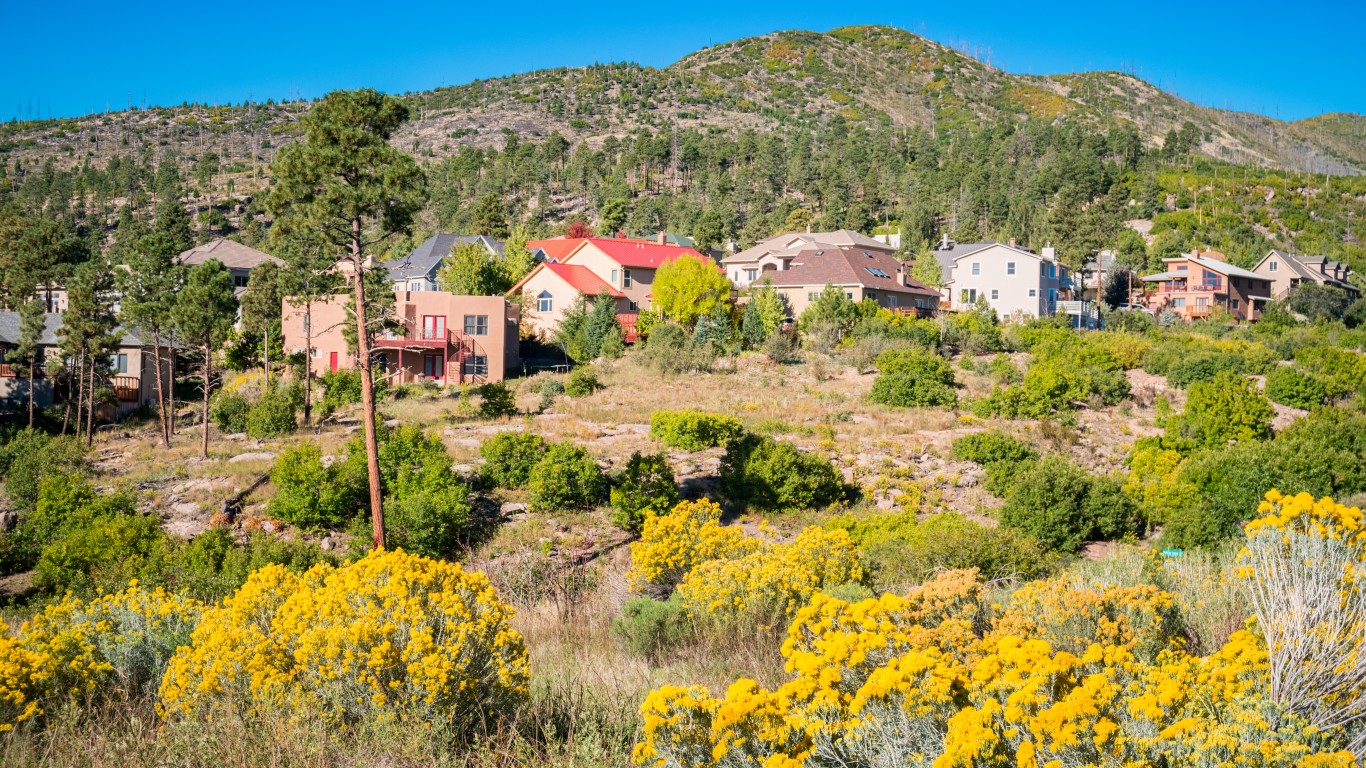
- Median home value: $342,000 (state: $184,800)
- Median household income: $118,293 (state: $54,020)
- Population with access to exercise opportunities: 99.3% (state: 74.3%)
- Recreational establishments: N/A
- Total population: 13,270
New York: Rye

- Median home value: $1,529,400 (state: $340,600)
- Median household income: $207,930 (state: $75,157)
- Population with access to exercise opportunities: 99.6% (state: 93.2%)
- Recreational establishments: 42.6 per 10,000 businesses (state: 58.3 per 10,000)
- Total population: 16,459
North Carolina: Chapel Hill

- Median home value: $454,300 (state: $197,500)
- Median household income: $77,037 (state: $60,516)
- Population with access to exercise opportunities: 83.3% (state: 74.5%)
- Recreational establishments: 15.0 per 10,000 businesses (state: 35.1 per 10,000)
- Total population: 60,920
North Dakota: Grand Forks
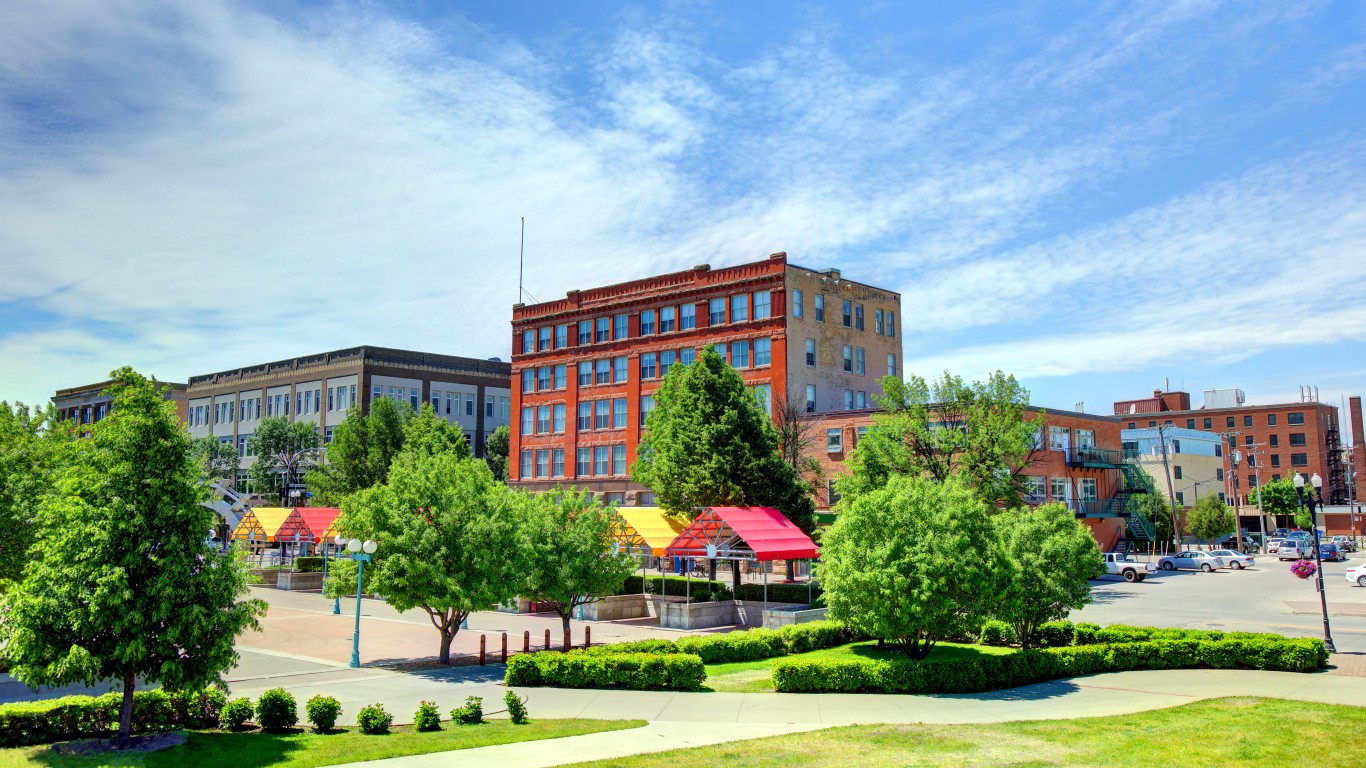
- Median home value: $215,900 (state: $209,900)
- Median household income: $53,611 (state: $68,131)
- Population with access to exercise opportunities: 88.0% (state: 72.5%)
- Recreational establishments: 36.9 per 10,000 businesses (state: 57.2 per 10,000)
- Total population: 58,867
Ohio: The Village of Indian Hill

- Median home value: $918,800 (state: $159,900)
- Median household income: $194,643 (state: $61,938)
- Population with access to exercise opportunities: 96.9% (state: 83.8%)
- Recreational establishments: 33.6 per 10,000 businesses (state: 40.8 per 10,000)
- Total population: 6,017
Oklahoma: Oklahoma City

- Median home value: $168,900 (state: $150,800)
- Median household income: $59,679 (state: $56,956)
- Population with access to exercise opportunities: 93.8% (state: 71.3%)
- Recreational establishments: 21.3 per 10,000 businesses (state: 34.7 per 10,000)
- Total population: 673,183
Oregon: Portland

- Median home value: $462,800 (state: $362,200)
- Median household income: $78,476 (state: $70,084)
- Population with access to exercise opportunities: 99.5% (state: 87.9%)
- Recreational establishments: 39.1 per 10,000 businesses (state: 37.7 per 10,000)
- Total population: 647,176
Pennsylvania: Merion Station

- Median home value: $693,800 (state: $197,300)
- Median household income: $233,340 (state: $67,587)
- Population with access to exercise opportunities: 96.4% (state: 85.8%)
- Recreational establishments: 38.7 per 10,000 businesses (state: 52.7 per 10,000)
- Total population: 5,369
Rhode Island: Newport
- Median home value: $529,900 (state: $292,600)
- Median household income: $77,092 (state: $74,489)
- Population with access to exercise opportunities: 92.9% (state: 95.5%)
- Recreational establishments: 129.3 per 10,000 businesses (state: 74.5 per 10,000)
- Total population: 25,322
South Carolina: Mount Pleasant

- Median home value: $499,600 (state: $181,800)
- Median household income: $106,216 (state: $58,234)
- Population with access to exercise opportunities: 89.8% (state: 70.3%)
- Recreational establishments: 43.8 per 10,000 businesses (state: 42.7 per 10,000)
- Total population: 88,900
South Dakota: Vermillion

- Median home value: $169,500 (state: $187,800)
- Median household income: $47,920 (state: $63,920)
- Population with access to exercise opportunities: 85.5% (state: 70.6%)
- Recreational establishments: N/A
- Total population: 11,506
Tennessee: Brentwood
- Median home value: $711,900 (state: $193,700)
- Median household income: $165,948 (state: $58,516)
- Population with access to exercise opportunities: 81.9% (state: 67.6%)
- Recreational establishments: 11.2 per 10,000 businesses (state: 39.0 per 10,000)
- Total population: 44,354
Texas: University Park

- Median home value: $1,380,600 (state: $202,600)
- Median household income: $247,045 (state: $67,321)
- Population with access to exercise opportunities: 96.7% (state: 81.7%)
- Recreational establishments: 20.4 per 10,000 businesses (state: 27.8 per 10,000)
- Total population: 25,029
Utah: Summit Park

- Median home value: $814,900 (state: $339,700)
- Median household income: $156,200 (state: $79,133)
- Population with access to exercise opportunities: 95.1% (state: 84.2%)
- Recreational establishments: 22.2 per 10,000 businesses (state: 22.7 per 10,000)
- Total population: 8,406
Vermont: Middlebury

- Median home value: $332,200 (state: $240,600)
- Median household income: $65,050 (state: $67,674)
- Population with access to exercise opportunities: 64.0% (state: 70.6%)
- Recreational establishments: 26.2 per 10,000 businesses (state: 96.6 per 10,000)
- Total population: 7,191
Virginia: McLean

- Median home value: $1,102,100 (state: $295,500)
- Median household income: $242,610 (state: $80,615)
- Population with access to exercise opportunities: 99.7% (state: 83.4%)
- Recreational establishments: 14.8 per 10,000 businesses (state: 35.4 per 10,000)
- Total population: 49,310
Washington: Mercer Island

- Median home value: $1,504,500 (state: $397,600)
- Median household income: $170,000 (state: $82,400)
- Population with access to exercise opportunities: 98.0% (state: 86.0%)
- Recreational establishments: 30.4 per 10,000 businesses (state: 34.0 per 10,000)
- Total population: 25,506
West Virginia: Cheat Lake

- Median home value: $305,000 (state: $128,800)
- Median household income: $99,656 (state: $50,884)
- Population with access to exercise opportunities: 74.7% (state: 57.8%)
- Recreational establishments: 20.8 per 10,000 businesses (state: 40.8 per 10,000)
- Total population: 10,187
Wisconsin: Mequon

- Median home value: $402,900 (state: $200,400)
- Median household income: $135,425 (state: $67,080)
- Population with access to exercise opportunities: 97.3% (state: 83.5%)
- Recreational establishments: 64.2 per 10,000 businesses (state: 54.2 per 10,000)
- Total population: 24,814
Wyoming: Jackson
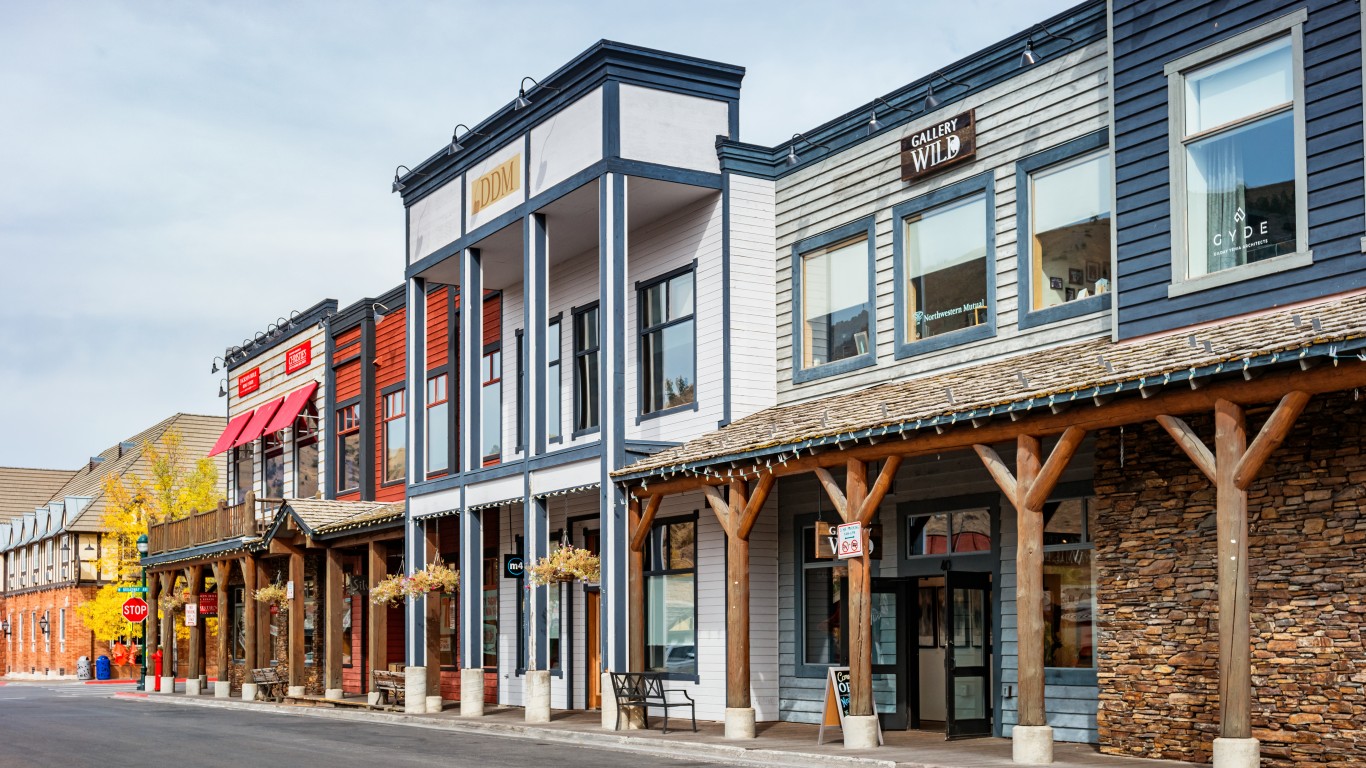
- Median home value: $836,300 (state: $237,900)
- Median household income: $83,289 (state: $68,002)
- Population with access to exercise opportunities: 97.7% (state: 77.5%)
- Recreational establishments: 51.2 per 10,000 businesses (state: 49.8 per 10,000)
- Total population: 10,728
Methodology
To identify the best city to live in every state, 24/7 Wall St. created a weighted index of 22 measures across three categories: economy, quality of life, and community.
The economy category consists of seven measures:
- Employment growth from 2016 to 2021, included at full weight
- Annual unemployment rate, included at full weight
- Median household income, included at full weight
- Poverty rate, included at full weight
- Percentage of the population 25 years and over with bachelor’s degree or higher, included at full weight
- Median home value, included at full weight
- Median real estate taxes as percentage of median home value, included at full weight
The quality of life category consists of 11 measures:
- Percentage of commuting workers 16 and over took public transportation, walked, or took other means to work, included at full weight
- Percentage of workers 16 years and over living in a place who worked in place of residence, included at full weight
- Mean travel time to work, included at half-weight
- Average hospital 30-day readmission rate, included at half-weight
- Average hospital mortality rate for heart attack, CABG surgery, COPD, heart failure, pneumonia, and stroke, included at half-weight
- Distance to nearest hospital, included at half-weight
- Percentage of the population in urban census tracts at least 1 mile from a grocery store and in rural census tracts at least 10 miles from a grocery store, included at half-weight
- Annual crude drug-induced mortality rate per 100,000 residents, included at half-weight
- Rate of hospital stays for ambulatory-care sensitive conditions per 100,000 Medicare enrollees, included at half-weight
- Violent crimes per 100,000 residents, included at half-weight
- Property crimes per 100,000 residents, included at half-weight
The community category consists of four measures:
- Population with access to exercise opportunities, included at full weight
- Motion picture theaters (except drive-ins), libraries and archives, theater companies and dinner theaters, sports teams and clubs, museums, zoos and botanical gardens, nature parks, and other similar institutions, golf courses, and country clubs, and marinas per 10,000 establishments included at full weight
- Drinking places (alcoholic beverages) per 10,000 establishments, included at full weight
- Restaurants and other eating places per 10,000 establishments, included at full weight
Data on population, employment, unemployment, median home value, median household income, median property taxes paid, commuter characteristics, average travel time to work, and poverty came from the U.S. Census Bureau’s American Community Survey and are five-year estimates for the period 2017 to 2021. Employment data used to calculate five-year employment growth are five-year estimates for the years 2012 to 2016.
Data on the share of the population in urban census tracts or areas at least 1 mile from a grocery store and in rural census tracts at least 10 miles from a grocery store, a measure of poor food access, came from the U.S. Department of Agriculture’s 2021 update to the Food Access Research Atlas and is at the county level.
Data on hospital locations came from the Centers for Medicare & Medicaid Services. Data on 30-day readmission rates and 30-day mortality rates also came from the CMS and are for the period July 2019 to June 2022. Data was aggregated to the city level for cities with at least one hospital and was aggregated to the county level for cities with no hospitals.
Data on the number of drug-related deaths per 100,000 residents per year from the period 2019 to 2021 is from the Centers for Disease Control and Prevention and is at the county level. Data on preventable hospitalizations per 1,000 Medicare enrollees and the percentage of the population with access to exercise opportunities came from the 2023 County Health Rankings and Roadmaps program, a collaboration between the Robert Wood Johnson Foundation and the University of Wisconsin Population Health Institute, and is at the county level.
Data on the number of violent crimes and property crimes reported per 100,000 residents came from the FBI’s Uniform Crime Reporting Program and are for the year 2020.
Data on the number of motion picture theaters (except drive-ins), libraries and archives, theater companies and dinner theaters, sports teams and clubs, museums, zoos and botanical gardens, nature parks and other similar institutions, golf courses, and country clubs, marinas, drinking places, and restaurants came from the Census Bureau’s 2021 County Business Patterns series and is at the county level.
Our list includes cities, towns, villages, boroughs, and census-designated places. We did not include places with fewer than 5,000 residents in our analysis. Cities where 50% or more of the population is enrolled in college or graduate school or where 40% or more of housing units are vacant for seasonal, recreational, or occasional use were excluded. Cities must also have data available for 15 of the 22 measures considered.
Thank you for reading! Have some feedback for us?
Contact the 24/7 Wall St. editorial team.

